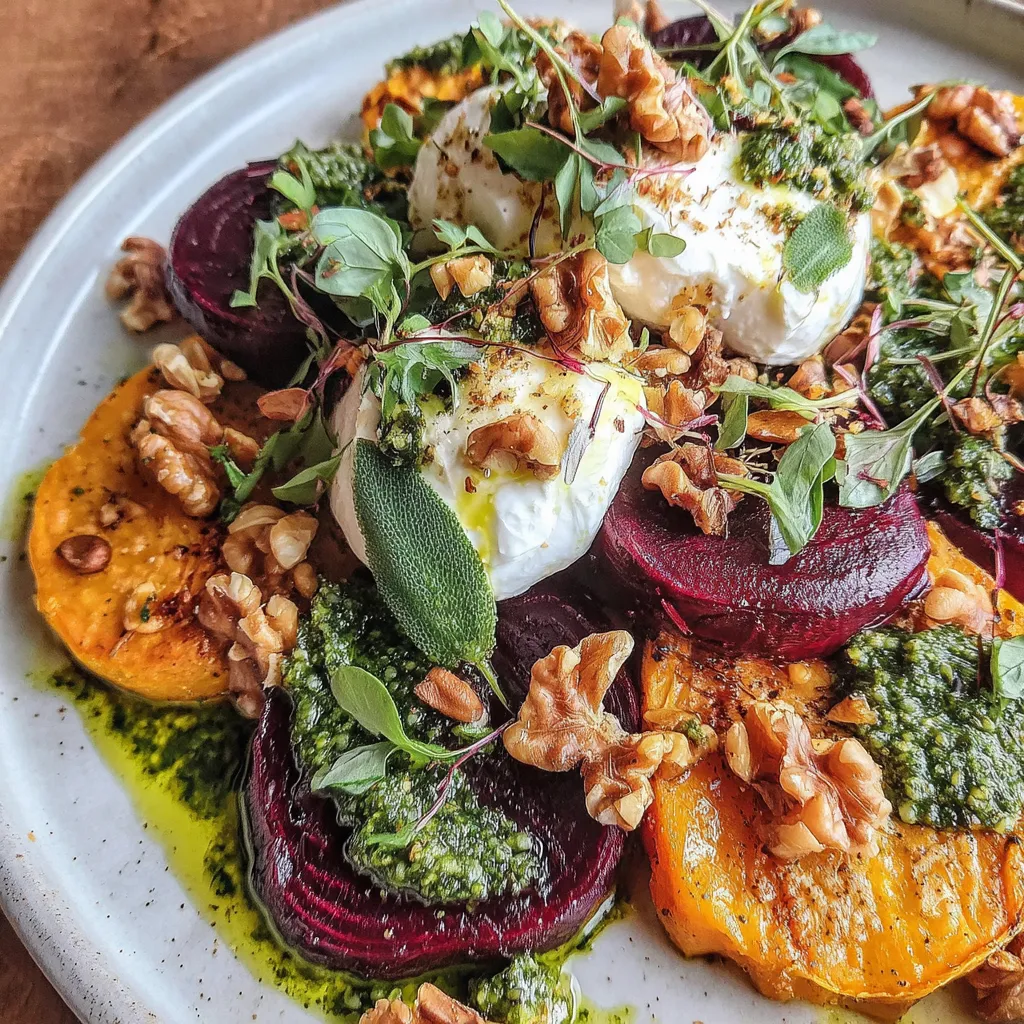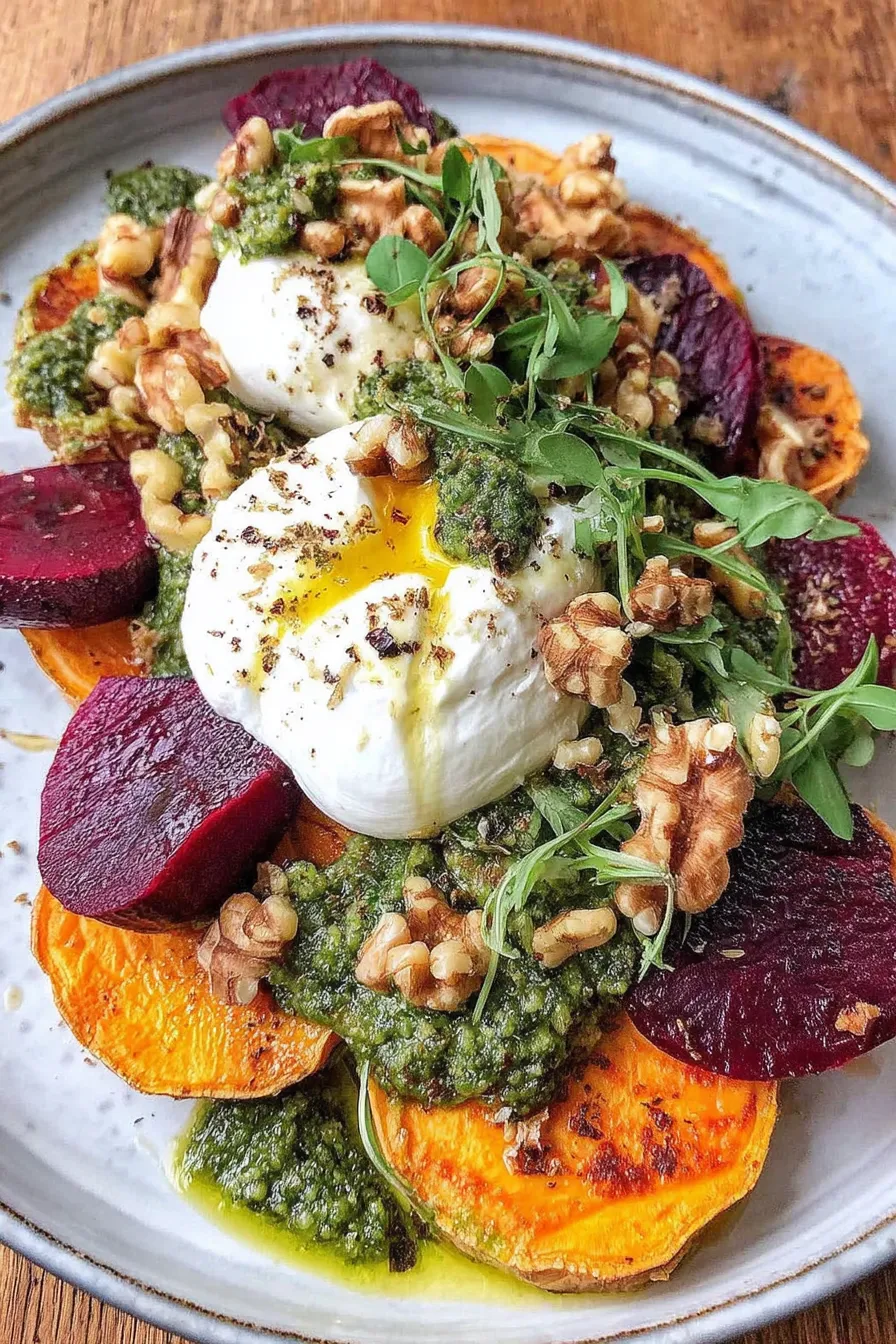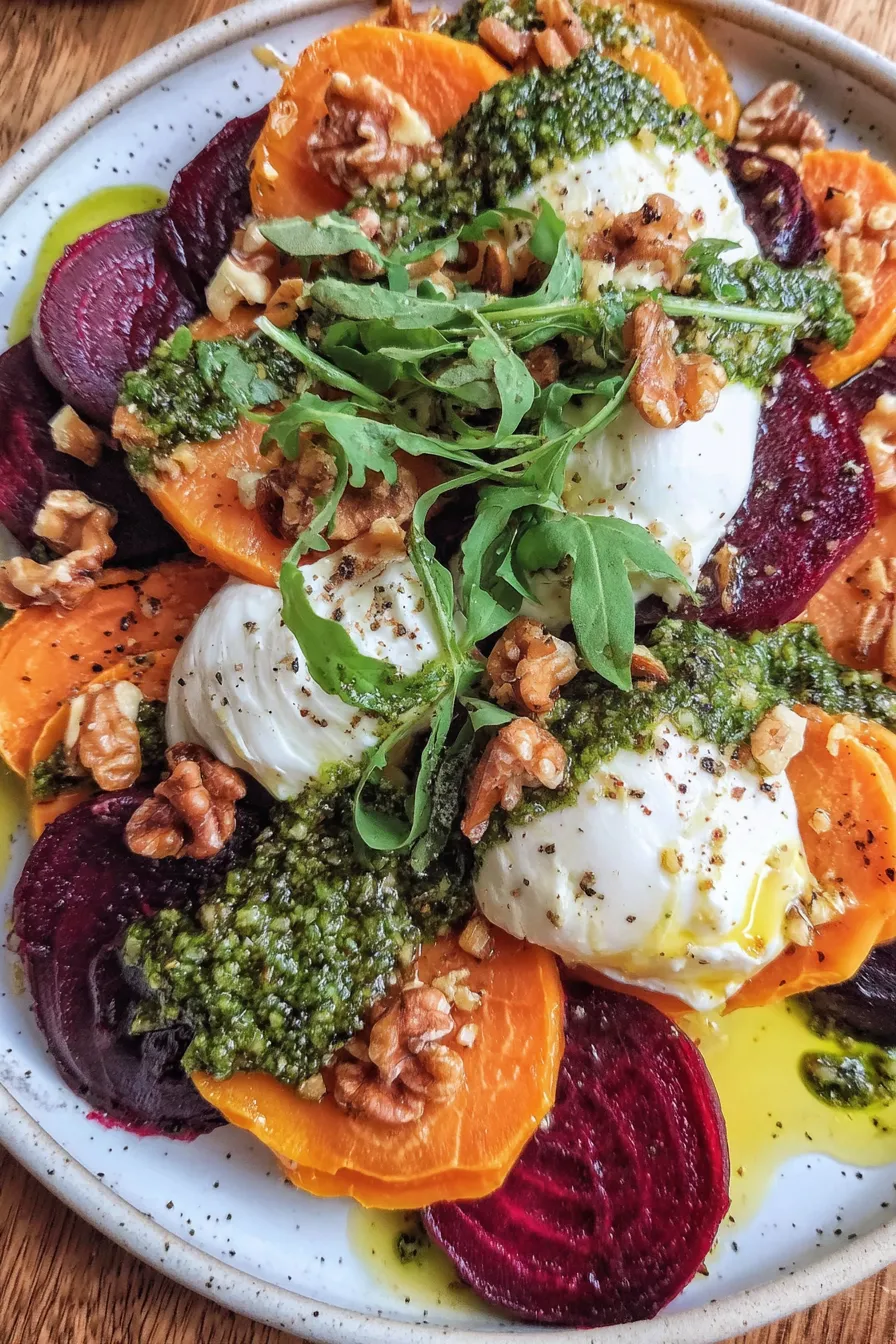 Pin it
Pin it
This vibrant sweet potatoes with burrata dish brings together hearty roasted sweet potatoes and earthy roasted beets, all crowned with creamy burrata and an herb-forward walnut sage pesto. It is the kind of recipe that instantly feels cozy and special, thanks to both flavor and texture. Perfect for a lively gathering or a quiet weeknight when you want something comforting and a bit luxurious.
The first time I made this, I was hooked by the aroma of toasted walnuts and sage drifting through my kitchen. My friends now ask for this as the centerpiece when I host fall dinners.
Ingredients
- Sweet potatoes: these add natural sweetness and substance look for firm ones without blemishes
- Olive oil: brings richness and helps with roasting use a good extra virgin olive oil for best flavor
- Salt and pepper: bring out the natural flavors of each ingredient choose flaked salt or kosher for best seasoning
- Beets: roasted beets add color and a subtle earthy note pick beets that feel heavy for their size and have taut skins
- Walnuts: for pesto and garnish these add crunch and toasted depth choose raw walnuts and toast them yourself for best aroma
- Fresh sage leaves or a combination with basil: the sage flavor is crucial for the pesto look for vibrant leaves with no wilting
- Garlic: one clove adds a mellow bite use fresh garlic rather than prechopped
- Burrata cheese or mozzarella: for a creamy luxurious topping choose burrata that feels heavy for its size with a soft center
- Additional olive oil for pesto and finishing: always use a flavorful oil rather than something neutral
Step-by-Step Instructions
- Prep and Roast the Sweet Potatoes:
- Slice the sweet potatoes into thick rounds keeping them uniform for even cooking. Arrange them in a single layer on a baking sheet. Drizzle with olive oil and season with salt and pepper. Roast in a hot oven until the slices are tender and golden on the edges. This step builds the sweet foundation for the dish.
- Roast and Slice the Beets:
- Individually wrap each beet in aluminum foil and place on a baking sheet. Roast until easily pierced by a fork the wrapping helps them cook gently and evenly. Let the beets cool so you can handle them then peel and slice into rounds for layering.
- Make the Walnut Sage Pesto:
- Toast walnuts in a dry pan to release flavor and aroma. Pulse them in a food processor with fresh sage leaves or a basil mix garlic and olive oil blending until smooth but still textured. Season with salt and pepper and loosen if needed with extra oil. This sauce is packed with flavor and ties all the ingredients together.
- Assemble the Platter:
- Lay the roasted sweet potato rounds on a platter. Top each slice with a roast beet round and a generous piece of burrata cheese. Layering this way ensures each bite has all the flavors and textures.
- Finish with Pesto and Garnish:
- Add a nice dollop of walnut sage pesto on each round. Sprinkle with toasted chopped walnuts and fresh herbs. Drizzle the whole dish with more olive oil to finish and serve warm or at room temperature for the best texture and flavor.
 Pin it
Pin it
I have a real soft spot for sage which grows wild in my grandmother’s backyard. Using it in pesto here makes the whole dish taste nostalgic to me almost like a garden in fall.
Storage Tips
Store any leftovers in an airtight container in the fridge for up to two days. The pesto keeps best in its own jar covered with a thin layer of olive oil. If you are prepping ahead, add the burrata just before serving to keep things creamy.
Ingredient Substitutions
If burrata cannot be found, use fresh mozzarella or a soft goat cheese for a similar creamy effect. For the pesto, try walnuts with parsley or all basil for a different herby twist. Roasted carrots or parsnips also make a great stand-in for sweet potatoes.
 Pin it
Pin it
Serving Suggestions
Serve this platter as a stunning starter or alongside roast chicken for a complete meal. I sometimes add a handful of arugula or spinach underneath for extra greens and freshness.
Cultural Context
Root vegetables like sweet potatoes and beets are traditional in fall cuisines around the world. Using burrata and fresh pesto leans Italian but the flavors are universally comforting and adaptable to many tables.
Frequently Asked Questions
- → Can I use mozzarella instead of burrata?
Yes, mozzarella can be substituted for burrata for a similar creamy texture, though burrata offers a richer flavor.
- → Do I need to use both sage and basil in the pesto?
You can use all sage for a robust flavor or combine sage and basil for a milder, more aromatic pesto.
- → How should I roast the beets for this dish?
Wrap beets individually in foil and roast at 400°F until tender. Once cooled, peel and slice before assembling.
- → Can this be served cold?
Yes, this dish tastes great both warm and at room temperature, making it convenient for make-ahead serving.
- → What bread pairs well with this combination?
Crusty baguette or rustic sourdough complements the creamy cheese and hearty vegetables beautifully.
- → How do I store leftovers?
Keep any leftovers in an airtight container in the refrigerator and enjoy within two days for best flavor.
